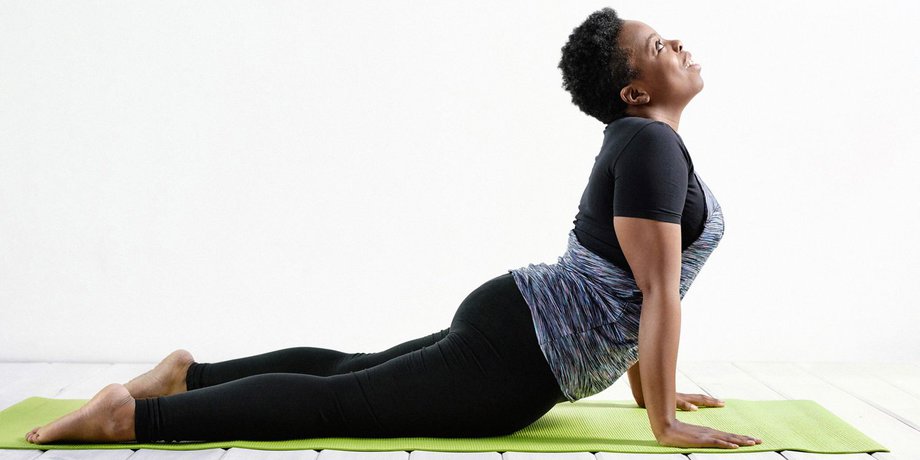Can Yoga and Stretching Exercises Improve Pain Symptoms?

This article examines the potential benefits of incorporating yoga and stretching exercises into one’s routine for pain relief.
It explores the scientific understanding behind the effectiveness of these practices in managing and alleviating pain symptoms.
Additionally, the article provides guidance on specific yoga poses and stretches that can target common pain symptoms.
By presenting an objective and impersonal analysis, this article aims to explore the potential of yoga and stretching exercises as a non-pharmacological approach to pain management.
Key Takeaways
- Regular yoga practice can help alleviate pain associated with conditions such as chronic low back pain, osteoarthritis, and fibromyalgia.
- Stretching exercises aim to increase muscle length, improve joint range of motion, reduce muscle tension, improve blood flow, and alleviate pain.
- Yoga promotes relaxation, increases body awareness, and improves mindfulness, contributing to pain relief.
- Incorporating yoga and stretching into a daily routine offers potential benefits for pain relief, including improved flexibility, reduced stress, enhanced mindfulness, loosened muscles, improved joint mobility, and relief from pain and stiffness.
The Benefits of Yoga for Pain Relief
Research studies have shown that practicing yoga can provide benefits for pain relief. Yoga, along with mindfulness, is increasingly being explored as an alternative therapy for managing pain symptoms.
Mindfulness practice involves focusing one’s attention on the present moment, accepting it without judgment. Yoga, on the other hand, combines physical postures, breathing exercises, and meditation to promote overall well-being.
Several studies have found that regular yoga practice can help alleviate pain associated with various conditions, such as chronic low back pain, osteoarthritis, and fibromyalgia. Yoga’s emphasis on breathing techniques and gentle stretching exercises may help improve flexibility, reduce muscle tension, and enhance body awareness, leading to pain relief.
Moreover, practicing yoga has been shown to have positive effects on mental health, including reducing stress and anxiety, which can further contribute to pain management.
Overall, the integration of yoga and mindfulness into alternative therapies offers promising potential for alleviating pain symptoms.
How Stretching Exercises Can Alleviate Chronic Pain
Physical therapy interventions involving targeted movements have been found to potentially alleviate chronic pain. Stretching techniques for chronic pain are commonly used in physical therapy to improve flexibility and reduce pain symptoms. Flexibility plays a crucial role in pain management as it helps to maintain normal joint function, enhance muscle elasticity, and improve overall mobility. Stretching exercises aim to increase muscle length and improve joint range of motion, which can help reduce muscle tension, improve blood flow, and alleviate pain. These exercises can include static stretching, dynamic stretching, and proprioceptive neuromuscular facilitation (PNF) stretching. Incorporating stretching exercises into a comprehensive pain management program can help individuals with chronic pain improve their physical function and overall quality of life.
| Stretching Techniques for Chronic Pain | Benefits |
|---|---|
| Static stretching | – Increases muscle length – Improves joint range of motion – Reduces muscle tension |
| Dynamic stretching | – Enhances muscle elasticity – Improves blood flow – Enhances overall mobility |
| PNF stretching | – Increases muscle length and joint range of motion – Enhances muscle activation and coordination – Reduces muscle pain and tension |
Understanding the Science Behind Yoga and Pain Management
The science behind the effectiveness of yoga in managing pain is rooted in its ability to promote relaxation, increase body awareness, and improve mindfulness. Research on yoga and pain has demonstrated a strong connection between yoga practice and pain relief. Several studies have shown that regular yoga practice can lead to a reduction in pain intensity and improved physical functioning in individuals with chronic pain conditions such as arthritis and fibromyalgia.
The potential mechanisms by which yoga may alleviate pain include:
- Activation of the body’s relaxation response
- Reduction of inflammation and stress hormones
- Improvement in muscle strength and flexibility
- Enhancement of body awareness and proprioception
- Promotion of mindfulness and pain acceptance
These factors contribute to a holistic approach to pain management, addressing both the physical and psychological aspects of pain. However, more research is needed to fully understand the underlying mechanisms and to optimize the use of yoga in pain management protocols.
Yoga Poses and Stretches to Relieve Common Pain Symptoms
Several studies have explored the various poses and stretches used in yoga as potential techniques for alleviating common symptoms associated with pain. For individuals experiencing back pain, certain yoga poses have been found to be beneficial.
Poses such as the cat-cow stretch, child’s pose, and downward-facing dog can help stretch and strengthen the muscles in the back, potentially reducing pain and improving flexibility. Additionally, yoga poses that focus on spinal extension and gentle twisting movements, such as the cobra pose and seated spinal twist, may also provide relief for back pain.
Similarly, for individuals with knee pain, specific stretches can be incorporated into their yoga practice. Stretches such as the standing quad stretch, seated forward bend, and reclined hand-to-big-toe pose can help to stretch and strengthen the muscles around the knee joint, potentially reducing pain and improving mobility.
Overall, incorporating appropriate yoga poses and stretches into a daily routine may offer potential benefits for individuals seeking relief from back and knee pain.
Incorporating Yoga and Stretching Into Your Daily Routine for Pain Relief
Incorporating appropriate practices into a daily routine may offer potential benefits for individuals seeking relief from pain. Alternative therapies for pain relief, such as yoga and stretching exercises, have gained attention for their potential in managing pain symptoms. These practices focus on improving flexibility, strength, and mindfulness, which may contribute to pain relief. Yoga combines physical postures, breathing exercises, and meditation to promote relaxation and reduce stress, both of which can influence pain perception. Similarly, stretching exercises help loosen muscles and improve joint mobility, potentially reducing pain and stiffness. Additionally, mindfulness, the practice of being present and non-judgmental, has been shown to play a role in pain management by redirecting attention away from pain and enhancing coping strategies. Table 1 provides an overview of the potential benefits of incorporating yoga and stretching into a daily routine for pain relief.
Table 1: Potential Benefits of Yoga and Stretching for Pain Relief
| Benefits | Yoga | Stretching |
|---|---|---|
| Improved flexibility | X | X |
| Increased strength | X | |
| Reduced stress | X | |
| Enhanced mindfulness | X | |
| Loosened muscles | X | |
| Improved joint mobility | X | |
| Pain and stiffness relief | X |
Frequently Asked Questions
Are There Any Potential Risks or Side Effects to Practicing Yoga or Stretching Exercises for Pain Relief?
Potential risks and side effects associated with practicing yoga or stretching exercises for pain relief need to be considered. Understanding the potential negative outcomes is essential for individuals considering these interventions.
How Long Does It Usually Take to See Results or Experience Pain Relief From Practicing Yoga or Stretching Exercises?
The timeframe for observing results and experiencing pain relief from yoga or stretching exercises varies. There is no universally recommended duration or frequency for maximum pain relief, as individual responses may differ.
Can Yoga or Stretching Exercises Be Effective for All Types of Pain, or Are There Specific Conditions or Injuries That They May Not Be Beneficial For?
The effectiveness of yoga and stretching for chronic pain varies depending on the specific condition or injury. While they may provide benefits for acute injuries, there are certain conditions for which they may not be beneficial.
Is It Necessary to Have Prior Experience or Flexibility in Order to Practice Yoga or Perform Stretching Exercises for Pain Relief?
Prior experience and flexibility are not necessary to practice yoga or perform stretching exercises for pain relief. Both can be modified for individuals with limited mobility, making them potentially effective for all types of pain.
Are There Any Modifications or Adaptations That Can Be Made to Yoga Poses or Stretching Exercises for Individuals With Limited Mobility or Physical Limitations?
Modifications for limited mobility and adaptations for physical limitations can be made to yoga poses and stretching exercises. These modifications allow individuals with restricted mobility or physical limitations to engage in these practices effectively and safely.








